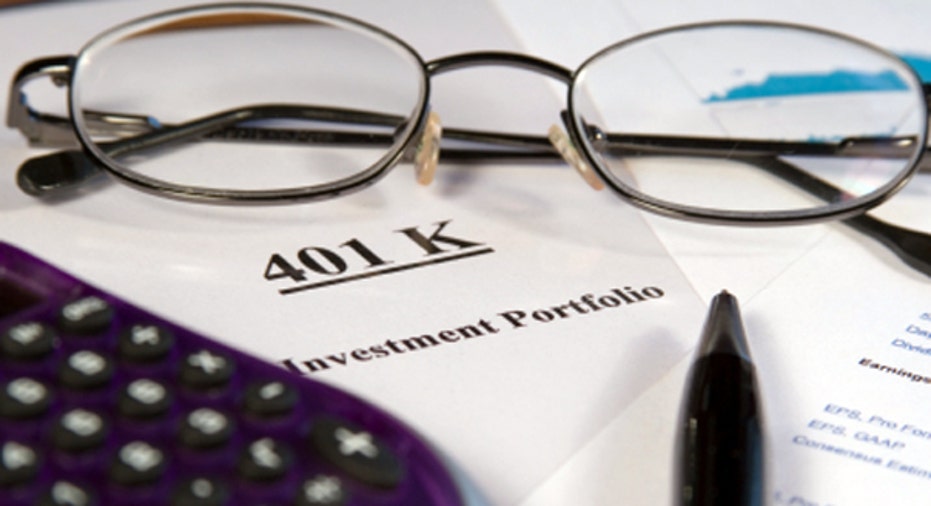Asset Allocation Tips for Young Investors

Most of us are flying solo when it comes to retirement planning, and according to a recent study, this tactic isn’t working out.
Research from the Employee Benefit Research Institute (EBRI) released earlier this month shows 57% of U.S. workers have less than $25,000 in total household savings and investments, excluding their homes—not nearly enough to retire.
Most of us lack the investment knowledge and emotional intolerance to play the investing game, particularly when it comes to making optimal portfolio decisions, but we need to learn. After all, the decisions we make about our retirement savings when we are in our 20s, 30s and beyond will determine our financial strength in our golden years.
One of the most important decisions we can make is optimizing our portfolio around the types of investments that fit our goals and risk tolerance. But that’s easier said than done.
Here’s an example of how a young investor can best optimize a portfolio:
Brian is in his early 30s single and has a stable income. His retirement portfolio is worth about $150,000, and he has invested it in a mix of equities (stocks and stock funds), fixed income (bonds) and cash investments.
Brian wants to avoid paying high fees, so he prefers using exchange traded funds (ETFs) rather than actively-managed mutual funds, which are generally more expensive. Right now his portfolio consists of 79% large cap U.S. stock ETFs, 15% fixed income ETFs and 6% cash equivalents.
Diversification is key to achieving long-term financial goals with appropriate risk tolerance. Over long periods of time, different types of investments tend to perform well at different times. Appropriately diversifying reduces the risk that his retirement will get derailed because an asset class tumbles.
Intelligent asset allocation is about making sure that you “cover the bases.” In other words, you want to make sure you build protection against risks that could impact one asset class or another. For example, high dividend-paying blue chip stocks will tend to outperform the market during periods of correction. On the other hand, U.S. small cap stocks can offer investors additional upside during growth runs. And diversifying into international stocks more closely aligns your portfolio with the global distribution of wealth.
When assessing his portfolio, Brian finds that he is significantly overweight in large-cap U. S. equities and should diversify some of these holdings into other equity asset classes. This includes mid-cap and small-cap U.S. stocks for a total 51% allocation to U.S. stocks, in addition to a 26% exposure to non-U.S. stocks.
The rationale behind this is that over long periods of time different asset classes (such as large cap, small cap or non-U.S. stocks) tend to perform well at different times under different market conditions. That reduces the portfolio’s exposure to concentrated risk at any given time, and provides a higher likelihood of outperforming a single asset class (such as U.S. large caps) over a long time horizon.
Brian also sees that it makes sense to change his previous weighting of 15% fixed income and 6% cash (for a total 21% in “safe harbor” exposures) into a more diversified fixed income allocation. He adds intermediate-term U.S. government bonds and mortgage-backed securities, for a total of 17%. Finally he decides to allocate 5% into commodities, which traditionally have relatively low correlation with both equities and fixed income.
Brian’s “before” and “after” portfolios look like this:
There are no guarantees when it comes to future performance when choosing an investment strategy, and even the most sophisticated asset allocation models can only make predictive recommendations within certain degrees of confidence, always less than 100%. But he is interested in making the decisions today that will give him more potential to achieve higher income and, as a result, a more enjoyable retirement.
Jemstep.com is an online investment advisor that helps people lock in more money for retirement. Using patented technology and proven portfolio management methodologies, Jemstep tells users exactly what to buy and sell to maximize their returns without undue risk. Jemstep’s easy-to-use website takes the complexity, difficulty, and anxiety out of investing. Providing the high-caliber, personalized advice that has traditionally been available only to wealthy investors, Jemstep empowers all investors to take charge of their retirement planning and invest with confidence. A Registered Investment Advisor with the SEC, Jemstep is led by a team of experts with over 100 years’ combined experience in financial management and technology innovation and development. Learn more at Jemstep.com.